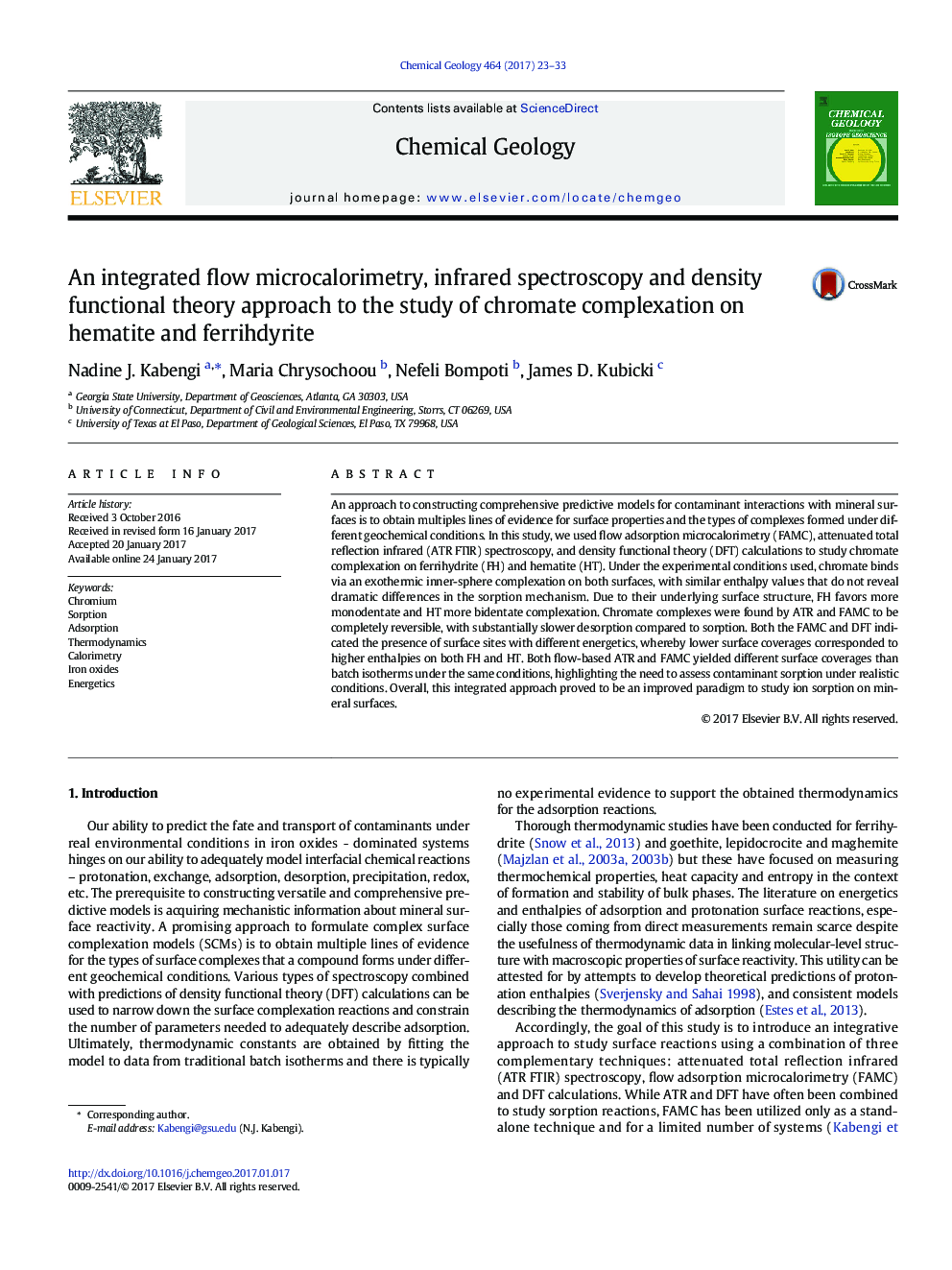| کد مقاله | کد نشریه | سال انتشار | مقاله انگلیسی | نسخه تمام متن |
|---|---|---|---|---|
| 5782758 | 1637510 | 2017 | 11 صفحه PDF | دانلود رایگان |
- Chromate sorbs exothermically on iron oxides, forming mostly inner sphere complexes.
- Surface structure drives the dominance of monodentate versus bidentate complexation.
- Chromate inner sphere complexes were slowly but completely reversible.
- DFT and microcalorimetry both indicated energetically heterogeneous surface sites.
- Flow versus batch conditions may influence surface coverage and sorption kinetics.
An approach to constructing comprehensive predictive models for contaminant interactions with mineral surfaces is to obtain multiples lines of evidence for surface properties and the types of complexes formed under different geochemical conditions. In this study, we used flow adsorption microcalorimetry (FAMC), attenuated total reflection infrared (ATR FTIR) spectroscopy, and density functional theory (DFT) calculations to study chromate complexation on ferrihydrite (FH) and hematite (HT). Under the experimental conditions used, chromate binds via an exothermic inner-sphere complexation on both surfaces, with similar enthalpy values that do not reveal dramatic differences in the sorption mechanism. Due to their underlying surface structure, FH favors more monodentate and HT more bidentate complexation. Chromate complexes were found by ATR and FAMC to be completely reversible, with substantially slower desorption compared to sorption. Both the FAMC and DFT indicated the presence of surface sites with different energetics, whereby lower surface coverages corresponded to higher enthalpies on both FH and HT. Both flow-based ATR and FAMC yielded different surface coverages than batch isotherms under the same conditions, highlighting the need to assess contaminant sorption under realistic conditions. Overall, this integrated approach proved to be an improved paradigm to study ion sorption on mineral surfaces.
Journal: Chemical Geology - Volume 464, 5 August 2017, Pages 23-33
